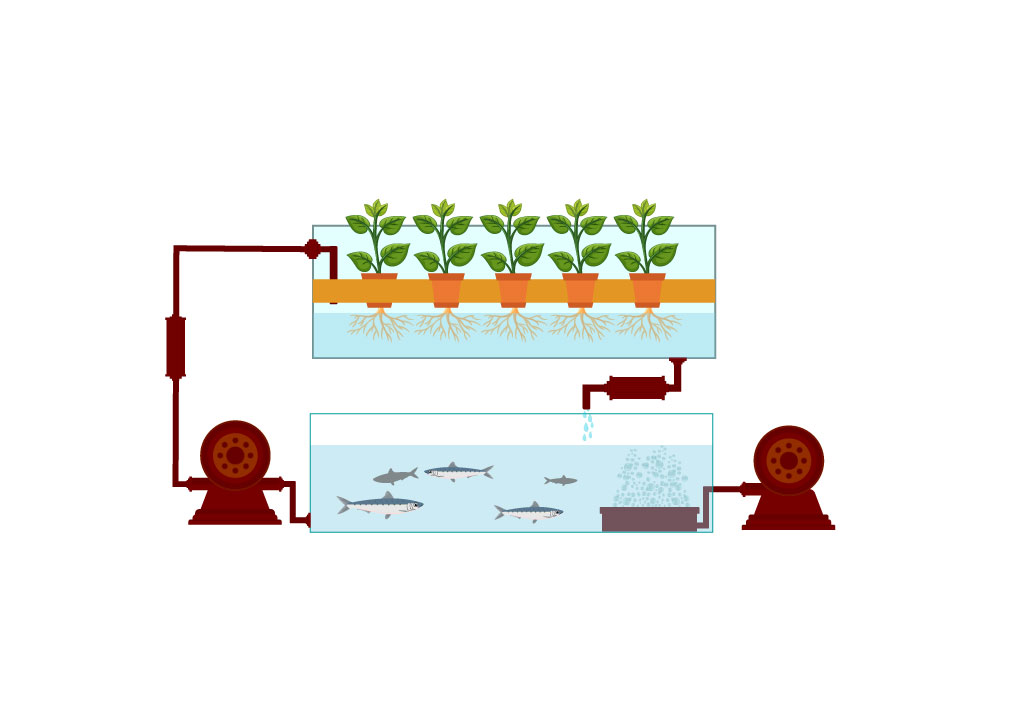Aquaponics
For the sake of better understanding, think of Aquaponics as a hybrid between Aquaculture (Fish Cultivation) and Hydroponics. In Aquaponics, the fertilizer that the crops need comes from a fish tank. The excreta of fish is highly nutritious for plants so it is circulated to the plant systems.
When the plants absorb the nutrition, the water in turn becomes filtered and clean. The cleaned water is then circulated back into the fish tank. The same process repeats over and over again. One can harvest the crops and the fish. Thus, without adding fertilizers, the two systems are looped for multiple yields.
 HydroTribe
HydroTribe


